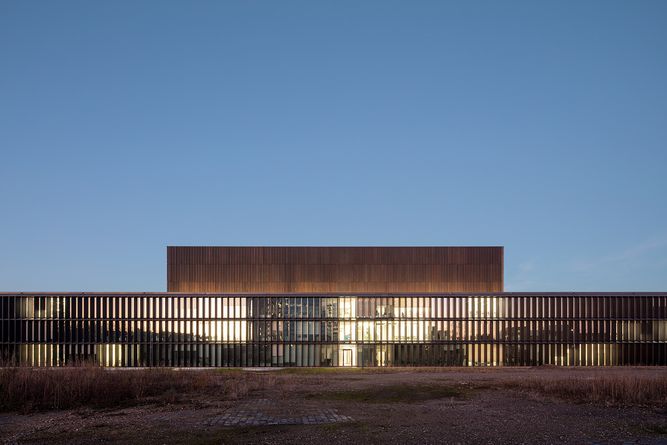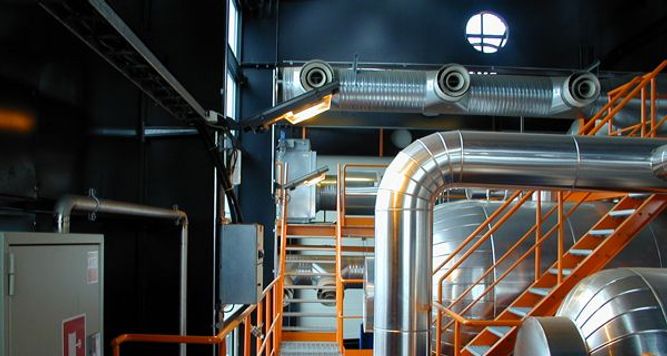Sustainability governance
Our sustainability governance, is like all our corporate governance decentralised with responsible decision making. It is based on the frameworks established by Group management and the Head of Sustainability is responsible for leading and following up on the Group’s sustainability efforts.
The Board has ultimate responsibility for the Group’s sustainability work and approves the sustainability report on an annual basis. The CEO and Head of Sustainability regularly update the Board on progress, key sustainability topics and focus areas.
Group management is responsible for the strategic focus of our sustainability efforts and for managing and following up on results from the activities carried out by the companies. The CEO has ultimate responsibility for the Group’s sustainability work. Group management has adopted Fagerhult Group’s double materiality assessment and sustainability agenda.
Social sustainability topics are managed by the Group’s central HR function, which is tasked with supporting the companies’ HR management and developing efficient processes to share the Group’s collective skills. HR representatives from each brand meet monthly to conduct continuous dialogues on how processes can be improved, in order to drive development toward the Group’s joint HR strategy.
Sustainability risks
In various ways, the Group’s operations are associated with sustainability risks. Awareness and action regarding these risks are fundamental to our sustainability efforts. We have identified and analysed the most material sustainability risks in the Group’s own operations and value chain. We identified which consequences these could have, from an impact perspective as well as in relation to our financial position. The risk analysis includes sustainability topics that we deem we have a significant impact on people and the environment.
Risks and opportunities due to climate change
Our risk mapping at a Group and company-level reveals considerable differences in the possible consequences of climate change. In the short term, there are opportunities in terms of increased demand for smart solutions, since this is an effective way to reduce energy consumption.
In the longer term, we will be negatively impacted by climate change, for example through flooding and extreme heat. It is important that operations are structured to handle these changes. Several of our companies have started identifying the climate risks and opportunities that they face. Some of the identified risks comprise increased temperatures and water intrusion in production units, shortages of renewable energy and energy, extreme electricity prices, and access to the right skills where we need them. If not taken into consideration and addressed, these risks will have a potential negative impact on our employees and on production, and likely result in increased costs.
Opportunities identified as a result of climate change are often linked to risks and society’s response to them. Increased demand and requirements for green products and solutions present us with opportunities. Some examples identified include access to and demand from new markets, new contact areas with partners, such as lighting designers, architects and installers. Demand also drives product development and innovation in lighting and smart solutions where we are already well advanced.

Collaborations and partnerships
A key area for retaining our strong competitiveness as a market leading lighting company is that we are committed in our industry to creating valuable collaborations and partnerships together with other organisations. On a country level, we are members of the industry organisations that are present in the respective markets in which we operate and through them we gain valuable information, drive transitional efforts and are part of specific committees that are, for example, focused on a transition towards a circular economy. We take responsibility for our products in each market, by recycling used products through collaborations with local organisations.
Examples of collaborations and partnerships
- Belysningsbranschen, Swedish industry organisation
- Other industry organisations in different countries
- CCBuild, Center for Circular Buildings
- National organisations related to WEEE (Waste from Electrical and Electronic Equipment)
- Green Building Council in several countries
- Society of Light and Lighting (SSL)
- Greenlight Alliance
- Illuminating Engineering Society (IES)
- Commission Internationale de l’Eclairage (CIE)
- International Electrotechnical Commission (IEC)
Sustainability work by Group companies
In our decentralised governance model, each company is responsible for its own sustainability initiatives and ensures that they are in line with the Group’s sustainability agenda and established targets. The managing director (MD) of each Group companyhas the ultimate responsibility for implementing and adhering to the Group’s Code of Conduct, including the Code of Conduct for business partners, and other regulations and guidelines at the local level. This includes relevant national laws and regulations as well as competition rules such as environmental legislation, labour laws and collective agreements. Each MD is responsible for communicating the content and importance of both codes of conduct and for ensuring that business partners and suppliers are also aware of them. Company managers are responsible for ensuring that each company pursues continuous competence development, primarily in the form of training activities that are based on local and individual needs. Each company is responsible for ensuring its own sustainable supply chain. Each company’s management is responsible for providing a safe and healthy work environment, and are required to proactively work to ensure an acceptable level of employee turnover and the minimising of occupational injuries.


